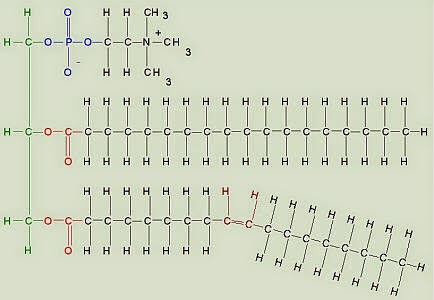A Different Sort of Rejection
My index finger clicked on the mouse, causing the drop-box to appear on my screen. Once I found what I was looking for--the bookmark for where I teach--I wrinkled my face up in fear as I clicked on its site. My fingers keyed the password in quickly, although I was in no hurry to get to the actual destination.
My silly reaction is because I proctored my first test yesterday. And to say that the results weren't pretty is truly an understatement. Including a freebie question, my mean was a dismal 56.5%. Yes, you're seeing just fine. The average score was, indeed, a failure.
I had promised the students that I would post their scores yesterday afternoon, but after seeing that score, I had to amend that promise. I had to write a quick email and tell them that I needed to really peruse the scores and see what had occurred at eleven o'clock in the morning on Monday, September 8. Because in my mind, something supernatural must have happened. Maybe a load of aliens inhabited my students, maybe a tissue-eating virus gorged on their brains. Maybe, just maybe, the fairies were at it again. I don't know the reason, but the scores on that first exam indicate that my students weren't all there for that test. In fact, it seemed, that no one besides me was actually there.
I've seen this before, back in the Fall of 2012. I think my seeing these sorts of scores is what made me bail on my class last fall. There is only so much I can do in my quest to see my students succeed, and truthfully, I feel as though I've done it. I've posted the material, I've given them time to ask questions, I've slowed down when asked, and I asked straight-forward exam questions. And yet (and yet), they still get something as fundamental as the characteristics of phopholipids incorrect.
Now before you get all, "It's A & P and that's a hard course" on me, I have to tell you this. Many of my exam questions can be pulled from my notes. They aren't exactly written verbatim, but a section of notes that speaks about what a phospholipid is and what it looks like? The answer is there. In the notes. For the student to understand (and at the very least, memorize). I didn't hide the answer. I showed the students what a phospholipid looks like, that it has a water-loving head and a water-hating tail. We discussed its structure and compared it to other structures. And I bet even you can tell that these two molecules look slightly similar. (Top is phospholipid, bottom is triglyceride, courtesy of this page.)
Now I haven't given you the true, full question, but if I compared these two structures to say, a steroid (show below), which one thing is not like the others?
(Yeah, see? Even you can succeed at A & P!)
But that's just the tip of the iceberg. And since I don't feel like complaining and this isn't a Tell Me How You Really Feel day, I'm just going to say this. We have work to do. All of us. Because I can't expect my students to magically understand everything, but they can't expect me to spoon-feed them the information. I'll keep encouraging them to study hard and apply what they know. I'll help them to analyze and critically think about the question, the situation, about life. I'll do my best to be patient and get as much of this information into their heads so that by the end of the course, they'll look at me and say, "Thank God she's not teaching next semester."
And then, maybe I'll take the semester off. Somehow, it's easier to be rejected by faceless literary agents than to be rejected by the students.
My silly reaction is because I proctored my first test yesterday. And to say that the results weren't pretty is truly an understatement. Including a freebie question, my mean was a dismal 56.5%. Yes, you're seeing just fine. The average score was, indeed, a failure.
I had promised the students that I would post their scores yesterday afternoon, but after seeing that score, I had to amend that promise. I had to write a quick email and tell them that I needed to really peruse the scores and see what had occurred at eleven o'clock in the morning on Monday, September 8. Because in my mind, something supernatural must have happened. Maybe a load of aliens inhabited my students, maybe a tissue-eating virus gorged on their brains. Maybe, just maybe, the fairies were at it again. I don't know the reason, but the scores on that first exam indicate that my students weren't all there for that test. In fact, it seemed, that no one besides me was actually there.
I've seen this before, back in the Fall of 2012. I think my seeing these sorts of scores is what made me bail on my class last fall. There is only so much I can do in my quest to see my students succeed, and truthfully, I feel as though I've done it. I've posted the material, I've given them time to ask questions, I've slowed down when asked, and I asked straight-forward exam questions. And yet (and yet), they still get something as fundamental as the characteristics of phopholipids incorrect.
Now before you get all, "It's A & P and that's a hard course" on me, I have to tell you this. Many of my exam questions can be pulled from my notes. They aren't exactly written verbatim, but a section of notes that speaks about what a phospholipid is and what it looks like? The answer is there. In the notes. For the student to understand (and at the very least, memorize). I didn't hide the answer. I showed the students what a phospholipid looks like, that it has a water-loving head and a water-hating tail. We discussed its structure and compared it to other structures. And I bet even you can tell that these two molecules look slightly similar. (Top is phospholipid, bottom is triglyceride, courtesy of this page.)
Now I haven't given you the true, full question, but if I compared these two structures to say, a steroid (show below), which one thing is not like the others?
(Yeah, see? Even you can succeed at A & P!)
But that's just the tip of the iceberg. And since I don't feel like complaining and this isn't a Tell Me How You Really Feel day, I'm just going to say this. We have work to do. All of us. Because I can't expect my students to magically understand everything, but they can't expect me to spoon-feed them the information. I'll keep encouraging them to study hard and apply what they know. I'll help them to analyze and critically think about the question, the situation, about life. I'll do my best to be patient and get as much of this information into their heads so that by the end of the course, they'll look at me and say, "Thank God she's not teaching next semester."
And then, maybe I'll take the semester off. Somehow, it's easier to be rejected by faceless literary agents than to be rejected by the students.





Comments